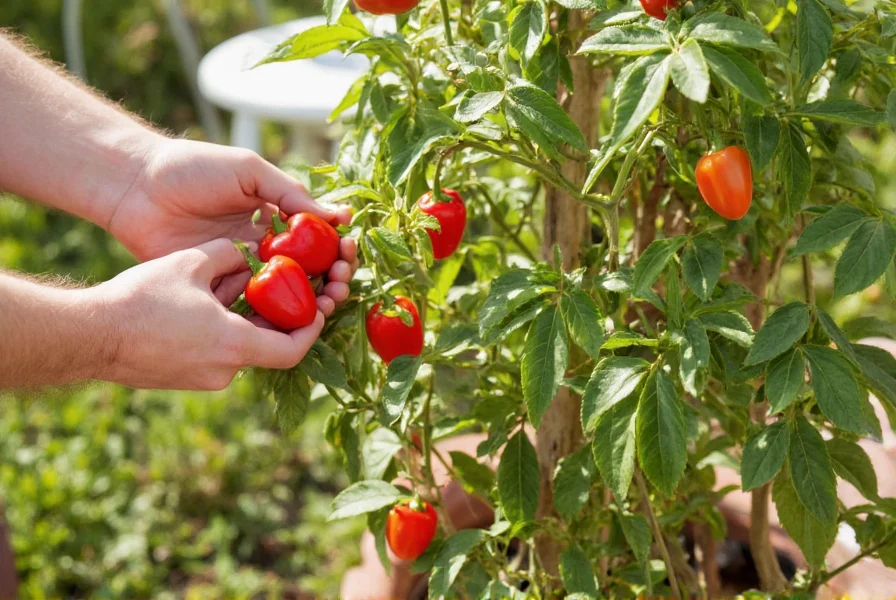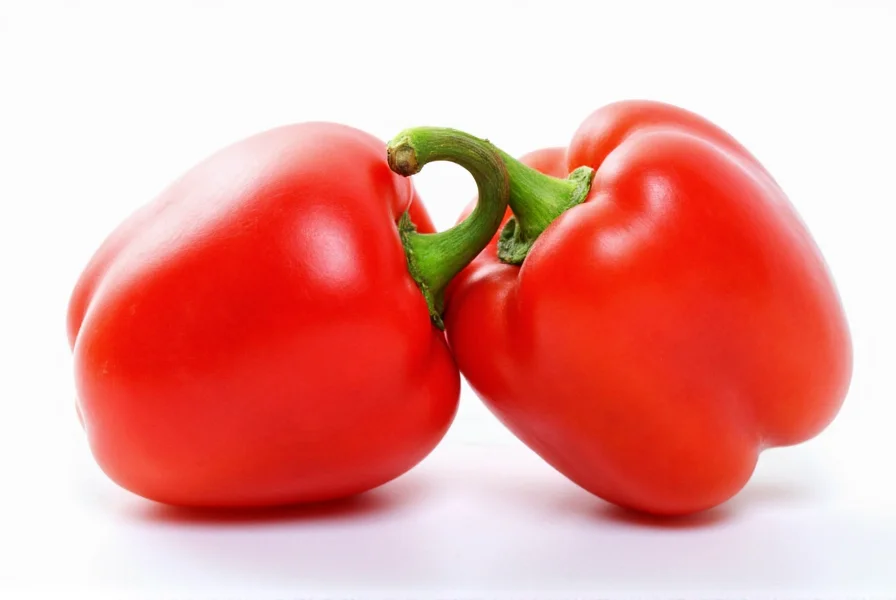Understanding the differences between pepper varieties helps home cooks and health-conscious eaters maximize their culinary and nutritional benefits. While bell peppers (Capsicum annuum) offer vibrant colors and sweetness, chili peppers provide varying heat levels through capsaicin, and black pepper (Piper nigrum) delivers pungent flavor from its dried berries. Each type serves unique purposes in global cuisines and offers distinct health advantages.
Types of Peppers: Understanding the Differences
Despite sharing the name "pepper," these ingredients come from completely different plant families. This classification confusion dates back to Christopher Columbus mistaking chili peppers for black pepper varieties.
| Pepper Type | Botanical Name | Heat Level (Scoville) | Primary Culinary Use |
|---|---|---|---|
| Bell Peppers | Capsicum annuum | 0 SHU | Raw salads, stuffed dishes, stir-fries |
| Jalapeño | Capsicum annuum | 2,500-8,000 SHU | Salsas, pickled preparations, nachos |
| Habanero | Capsicum chinense | 100,000-350,000 SHU | Hot sauces, Caribbean cuisine |
| Black Pepper | Piper nigrum | N/A (piperine) | Universal seasoning, meat rubs |

Nutritional Benefits of Different Pepper Varieties
Bell peppers represent nutritional powerhouses, particularly when comparing different colors. Red bell peppers contain nearly 9 times more beta-carotene and 1.5 times more vitamin C than green varieties due to extended ripening time. A single medium red bell pepper provides 169% of the daily recommended vitamin C intake.
Chili peppers offer unique health advantages through capsaicin, the compound responsible for their heat. Regular consumption of moderate chili peppers correlates with a 13% lower mortality risk according to research published in the Journal of the American College of Cardiology. Capsaicin demonstrates anti-inflammatory properties and may support metabolic health.
Black pepper's piperine enhances nutrient absorption, particularly for curcumin in turmeric. Studies show piperine can increase curcumin absorption by up to 2,000%, making black pepper a valuable addition to anti-inflammatory spice blends.
Culinary Applications Across Global Cuisines
Understanding regional pepper usage reveals fascinating culinary traditions. Hungarian paprika, made from specific sweet pepper varieties, forms the foundation of goulash and other Central European dishes. In Thai cuisine, bird's eye chilies provide intense heat balanced with sweet and sour elements.
Professional chefs recommend these techniques for maximizing pepper flavor:
- Roast bell peppers over open flame to develop complex sweetness
- Remove chili seeds and membranes to reduce heat intensity
- Grind black pepper fresh for maximum aromatic compounds
- Pair sweet peppers with acidic ingredients like vinegar to balance flavors
Growing Peppers Successfully at Home
Home gardeners can successfully cultivate various pepper types with proper conditions. Bell peppers require 65-80 days to maturity, while hotter varieties like habaneros need 90-120 days. All pepper plants thrive in warm temperatures (70-85°F) with consistent moisture and well-draining soil.
For optimal growth, start pepper seeds indoors 8-10 weeks before last frost date. Transplant seedlings outdoors when soil temperature reaches at least 65°F. Container gardening works well for chili peppers, which often perform better in pots than in-ground planting in cooler climates.

Storage and Preparation Tips
Proper storage extends pepper freshness significantly. Whole bell peppers maintain quality for 2-3 weeks when stored in the crisper drawer of your refrigerator. Sliced peppers should be placed in airtight containers with a paper towel to absorb excess moisture.
For long-term preservation, freeze roasted peppers in olive oil or make pepper-based sauces that freeze well. Drying chili peppers creates versatile ingredients for spice blends—simply string them by the stems and hang in a warm, dry location for 2-3 weeks.
Common Misconceptions About Peppers
Several myths persist about peppers that deserve clarification. The heat in chili peppers isn't concentrated in the seeds but in the white pith surrounding them. Removing seeds reduces heat only because some capsaicin transfers to seeds during preparation.
Another misconception suggests that larger bell peppers are less flavorful. In reality, size doesn't correlate with flavor intensity—ripeness and growing conditions matter more. The myth that green bell peppers are unripe versions of other colors holds true, as all colored bell peppers start green and change as they mature.
Practical Applications in Daily Cooking
Incorporating diverse peppers into your diet offers both flavor variety and nutritional benefits. Try these practical applications:
- Add finely diced jalapeños to morning eggs for metabolism boost
- Blend roasted red peppers into hummus for enhanced flavor and nutrition
- Use black pepper generously with turmeric-containing dishes
- Create rainbow pepper stir-fries using multiple bell pepper colors
Understanding the differences between pepper varieties helps optimize their use in specific culinary applications while maximizing health benefits. Whether you're exploring international cuisines or simply enhancing everyday meals, peppers provide versatile ingredients that deserve a prominent place in any kitchen.
Frequently Asked Questions
What's the difference between bell peppers and chili peppers?
Bell peppers belong to the same species as many chili peppers (Capsicum annuum) but lack capsaicin, the compound that creates heat. Bell peppers are specifically bred for sweetness and zero Scoville heat units, while chili peppers contain varying levels of capsaicin that determine their spiciness.
Why does black pepper enhance turmeric absorption?
Black pepper contains piperine, which inhibits certain digestive enzymes and increases intestinal absorption. Research shows piperine can enhance curcumin (the active compound in turmeric) absorption by up to 2,000%, making the combination significantly more beneficial than turmeric alone.
Which color bell pepper is the most nutritious?
Red bell peppers are generally the most nutritious as they've ripened longest on the plant. They contain nearly 11 times more beta-carotene and 1.5 times more vitamin C than green bell peppers. The extended ripening period allows for greater development of antioxidants and vitamins.
How can I reduce the heat of chili peppers in cooking?
To reduce heat, remove the white pith and seeds where most capsaicin concentrates. Soaking chopped chilies in vinegar or lemon juice for 10-15 minutes can also temper the heat. Adding dairy products like yogurt or sour cream to spicy dishes helps neutralize capsaicin, as does incorporating sugar or honey to balance the flavor profile.
Can I grow different pepper varieties together without cross-pollination issues?
Yes, different pepper varieties can grow together without affecting current season fruit. While peppers can cross-pollinate, this only affects seeds saved for future planting, not the current season's fruit. If you plan to save seeds, maintain 500-foot separation between different varieties or use physical barriers to prevent cross-pollination.











 浙公网安备
33010002000092号
浙公网安备
33010002000092号 浙B2-20120091-4
浙B2-20120091-4